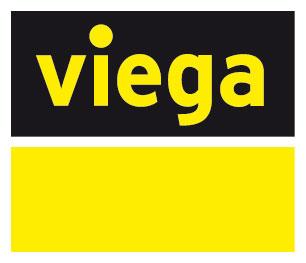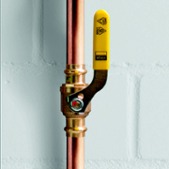Working on a rooftop elevates the difficulty of any job.
It adds safety concerns; weather plays a factor and the roof must be protected against damage. Of course, getting the tools and equipment in place via ladder, stairs or crane can also be a challenge.
That was the case with a recent rooftop job at a company headquarters in Moorestown, N.J. They needed to retrofit a building and its systems, including replacing 11 gas-fired cooling units on the roof. Piping the new units into the existing system required working on the roof and below the ceiling.
“Joining pipe to the units normally could have been done with threading but transporting the threading machine to the top of the building would have been difficult and the resulting cutting oils and metal shards could have damaged the roof,” said Jeff Campbell, Service Technician for Limbach, the firm handling the work.
Instead, Limbach chose to use Viega valves and fittings. That meant less equipment to get on the roof and eliminating the need for a hot work permit or fire watch.

“Working on rooftops is always a concern,” said Andy Wiegand, Vice President & Branch Manager of Limbach. “Pressing with Viega makes it much safer for the installer and mitigates risk for the structure.”
“We’ve been using Viega fittings and valves for years and we have total confidence in them,” said Steve Ryan, General Manager of Limbach. “You get a sense of the quality engineered into them when you handle them and press them. They were absolutely the right choice for this job.”
John Ayers of Yeager Supply in Reading, Pa., helped Limbach source the necessary parts: 45 MegaPressG valves in ¾” and 1” sizes and 85 MegaPressG fittings in the same sizes. UA Local 420 and UA Local 322 members were able to do the job quickly with no complications.
Using Viega also allows contractors like Limbach to more accurately estimate the time and cost of jobs, which saves them and their customers time and money.









